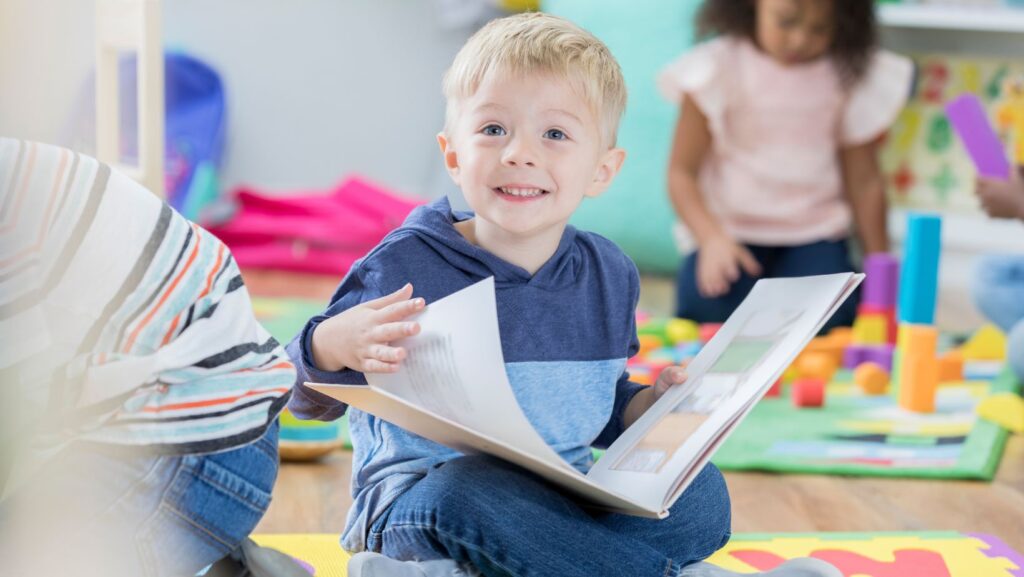Picture books are powerful tools for developing language skills in toddlers. These colorful, engaging stories captivate young minds while introducing new vocabulary and concepts. Reading picture books aloud to toddlers helps build their phonological awareness, a crucial foundation for learning to read.
Through interactive reading sessions, parents and caregivers can expand a child’s vocabulary by defining unfamiliar words and encouraging discussions about the story. This process naturally enhances a toddler’s language acquisition and comprehension abilities. Picture books also expose children to diverse situations and perspectives, broadening their understanding of the world around them.
Incorporating at-home speech therapy for toddlers through picture book reading can be an effective way to support language development. By asking questions, pointing out details in illustrations, and encouraging children to retell parts of the story, parents can create engaging learning experiences that foster communication skills and early literacy. The information presented here is educational and should not be considered a substitute for professional medical advice. Always seek personalized recommendations from your healthcare provider.
Key Takeaways
- Picture books build phonological awareness and vocabulary in toddlers
- Interactive reading techniques enhance language acquisition and comprehension
- Regular reading sessions support early literacy and communication skills development
Fostering Language Acquisition Through Picture Books
Picture books serve as powerful tools for developing language skills in toddlers. They provide a rich environment for learning new words, understanding sentence structures, and grasping basic concepts.
Importance of Reading to Toddlers
Reading to toddlers helps build a strong foundation for language development. It exposes them to a wider range of vocabulary than everyday conversation. Regular reading sessions improve listening skills and attention span.
Picture books introduce children to the conventions of print, such as reading from left to right and top to bottom. This early exposure prepares them for future literacy skills.
Reading aloud also strengthens the bond between caregivers and children, creating positive associations with books and learning.
Choosing the Right Picture Books
Select age-appropriate books with clear, colorful illustrations. Look for simple stories with repetitive phrases or rhymes that encourage participation.
Books featuring familiar objects and daily activities help toddlers connect words to their experiences. Choose a variety of topics to broaden their knowledge base.

Consider board books for younger toddlers, as they are durable and easy to handle. As children grow, introduce books with more complex stories and vocabulary.
Utilizing Illustrations for Vocabulary Growth
Point to pictures while reading and name objects, colors, and actions. This technique helps toddlers associate words with visual representations.
Ask questions about the illustrations to encourage engagement and comprehension. For example, “What color is the dog?” or “Can you find the ball?”
Use the pictures to expand on the story, describing details not mentioned in the text. This practice enhances observational skills and builds descriptive language.
Incorporating Reading Into Daily Routines
Establish a consistent reading time, such as before naps or bedtime. This routine creates a calm environment for learning and bonding.
Keep books accessible in different areas of the home. This encourages spontaneous reading throughout the day.
Integrate books into playtime by acting out stories or using them as inspiration for activities. This approach reinforces learning through multiple senses.
Carry books during outings to provide entertainment and learning opportunities in various settings.
Interactive Reading Techniques
Interactive reading engages toddlers actively in the storytelling process. It fosters language development through dialogue, questions, and hands-on exploration of picture books.
The Role of Parental Involvement
Parents play a crucial role in interactive reading. They can point to images, ask questions, and encourage toddlers to name objects or characters. This approach helps build receptive and expressive language skills.

Parents should use animated voices and facial expressions to bring stories to life. They can pause to discuss pictures, allowing children to absorb new vocabulary in context.
Repetition is key. Reading the same book multiple times helps toddlers learn and remember words, phrases, and concepts.
Exploring Storytelling and Retelling
Storytelling techniques enhance language skills. Parents can ask toddlers to predict what happens next or discuss characters’ feelings. This builds critical thinking and emotional understanding.
After reading, encourage toddlers to retell the story in their own words. This practice improves sequencing skills and memory recall.
Use props or puppets to act out scenes. This tactile approach reinforces story elements and encourages expressive language use.
Encouraging Participation and Critical Thinking
Ask open-ended questions to spark conversation. “What do you think the bunny will do next?” prompts toddlers to use imagination and language skills.
Incorporate counting, color identification, or shape recognition into reading time. This integrates early math concepts with language development.
Create simple games based on the book’s content. For example, a scavenger hunt for objects featured in the story promotes active engagement and vocabulary building.
Advancing Language Skills With Wordless Books
Wordless picture books offer unique opportunities for language development. They allow toddlers to create their own narratives based on visual cues.
Parents can guide toddlers in describing what they see on each page. This practice enhances observation skills and expands descriptive vocabulary.
Encourage toddlers to invent dialogue for characters. This exercise boosts creativity and social language skills.
Use wordless books to discuss emotions and motivations of characters. This helps develop empathy and emotional vocabulary.
Conclusion
Picture books are powerful tools for developing toddlers’ language skills. They provide rich opportunities for vocabulary expansion, phonological awareness, and social language development. Regular reading sessions with engaging picture books can significantly boost a child’s linguistic abilities. Parents and caregivers play a crucial role in maximizing these benefits through interactive reading practices and thoughtful book selection.
